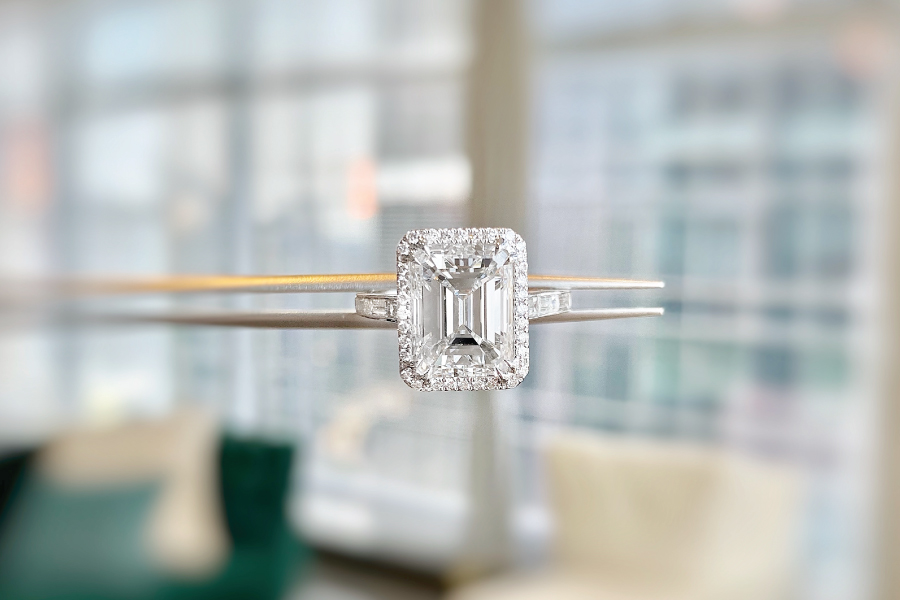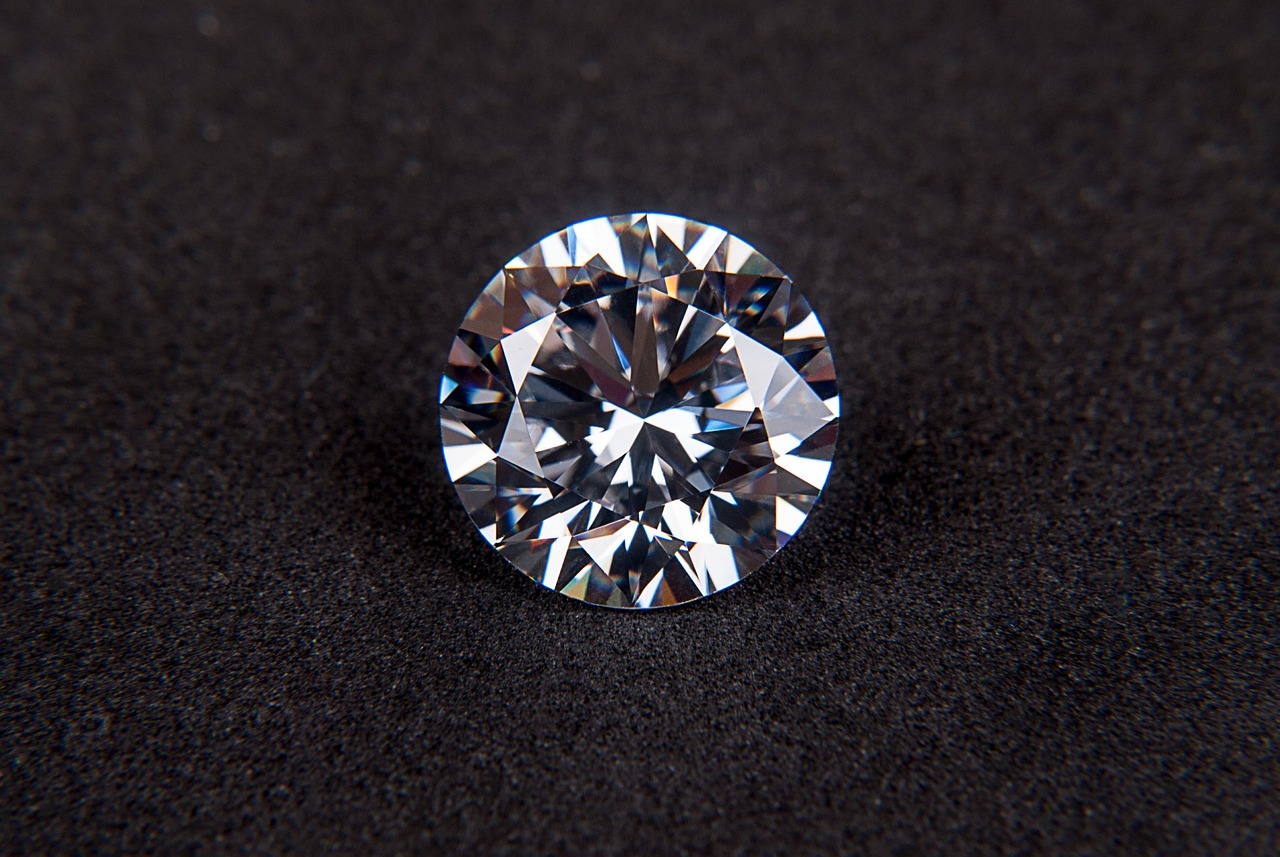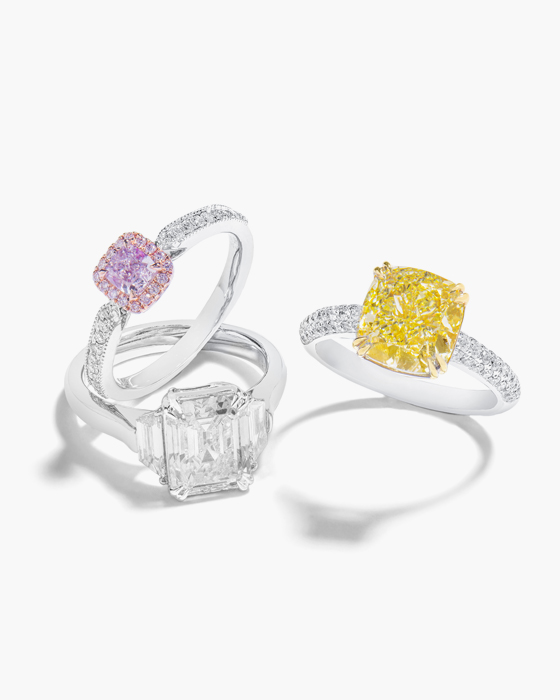Including the proportions, the depth, and the symmetry of the diamond, an ideal diamond cut is how a diamond is properly polished. It's common to hear about princess cut diamonds, radiant cut diamonds, cushion cut diamonds, and emerald cut diamonds are referred to as cut diamonds. The beauty and brilliance of a diamond are directly affected by its cut quality. Light is reflected in your eyes by a well-cut diamond, making it a luminous stone. If a diamond is not cut correctly, it will be dull rather than brilliant.
There is a significant impact on a diamond's beauty, aesthetic appeal, and value from its cut. The 4Cs are most important when it comes to quality. 'Ideal' cut is a term you'll likely hear when buying a round brilliant cut diamond, so if you wish to ensure you're getting the best diamond, you must learn everything you can about this cut.

GIA DIAMOND
Choosing the Right Diamond Cut
There is a sweet spot where beauty and value meet with most of the 4 C's of diamonds (the others being Clarity, Color, and Carat Weight).
When it comes to diamond clarity, as an example, any improvement in grade (generally around VS1-VS2) does not lead to a noticeable improvement in aesthetics. A diamond with VS1 or VS2 clarity appears clean and flawless at first glance.
There is, however, a difference between Diamond Cut and Round Cut. Compromise shouldn't be made on this grade. Although low-carat diamonds with middling grades in clarity and colour can still be radiant and beautiful, low-cut diamonds are more likely to lack the sparkle that they should.
The only way to hide a below-average cut is to restrict your search to Excellent or Ideal cut grades. Well-cut diamonds should still be able to stand out regardless of your budget constraints.
Diamond Cut Prices
Depending on the cut grade you choose, diamond prices can rise and fall dramatically.
The price of these rings is determined by how precisely and well the cut has been made, in particular, the proportions and symmetry of the rings. Each proportion is as precise as possible, such as the depth, the table, and all other dimensions. Even when compared to a typical excellent cut diamond, you pay a higher price for the diamond because of this.
It is worth the extra price to buy a diamond that is exceptionally cut because of the amount of light it returns and its brilliance. No matter how big or heavy a diamond is, it will never be radiant if it lacks brilliance and fire.
Thus, the cut of a diamond determines its beauty most significantly. It's better to spend more on Cut than Color or Clarity, which is why higher diamond cut prices are worth every penny.
Cutting a Diamond: Factors to Consider
Cut quality is an essential factor in determining the value and price of a diamond. Cut quality is defined by many factors, including proportions, facets, finishing details, and reflection of light. This combination of characteristics determines the quality of the diamond, which in turn determines its price. The cut is more critical than Color or Clarity in determining a diamond's beauty.
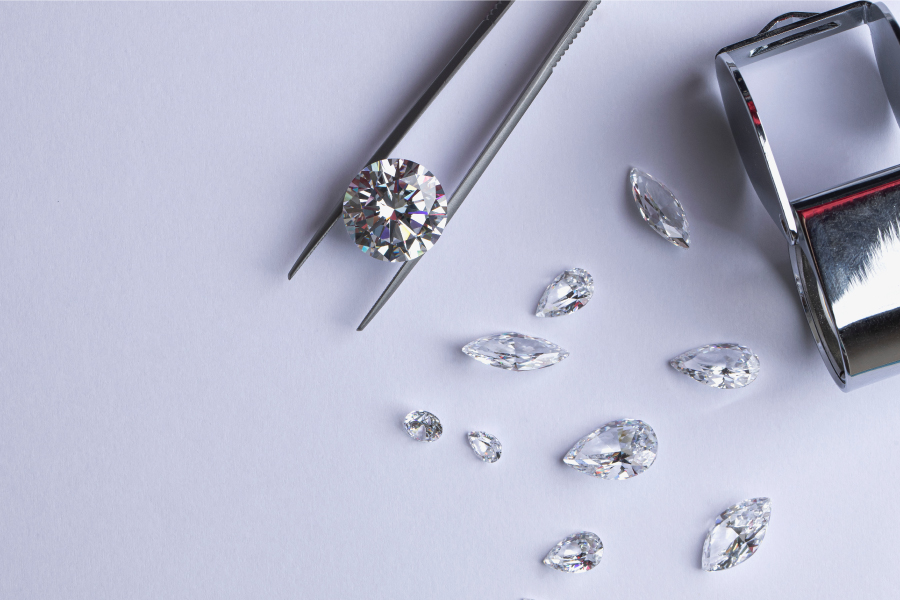
Diamonds in different shapes
Proportions of Diamond Cuts
To understand how the proportions of a diamond influence its cut quality, let's take a closer look at its table, width, and depth. Diamond cut quality is determined by these elements, which are universally measured.
Light reflection and brilliance are directly affected by a diamond's cut proportions. There is a shape, angle, and size ratio for each facet in a diamond, which is known as the facet proportion.
As well as determining the diamond's GIA grading, various combinations of these elements will influence how it interacts with light. The proportions of diamonds vary depending on their shape.
Diamond Table
The diamond table percentage can be calculated by dividing the surface area of the diamond by the width of the table. In this case, the table percentage would be 70% if the diamond facet size was 5mm in diameter and the table facet was 3.5mm in width.
The crown angles and facets of the diamond will not be able to reflect light if the table percentage is too high. Rather than reaching the eye, the light will escape from the top of the diamond, preventing vivid reflections of colour.
Low table percentages cause light to remain trapped inside the diamond instead of being emitted to the eye.
Width of Diamonds
By measuring from one end of a diamond's girdle (the diameter at its widest point) to the other, the width can be determined.
Diamonds are determined by their width, which determines their length to width ratio, as well as the shape that they are expected to take (square or rectangular, for example).
Diamonds are measured by their length to width ratio, which is calculated by dividing their length by their width. The length to width ratio of a diamond is 1.67 if its length is 5mm and its width is 3mm.
Depth Of A Diamond
In diamond terms, depth percentage refers to the height of the diamond from its culet to its top. Millimetres and percentages are used to measure depth. Depth % is calculated by dividing the depth by width.
As a result of the increased width, two equal carat diamonds with a lower depth % will typically appear larger. Too low a depth percentage, however, can create a darker appearance due to the lack of light reflection.
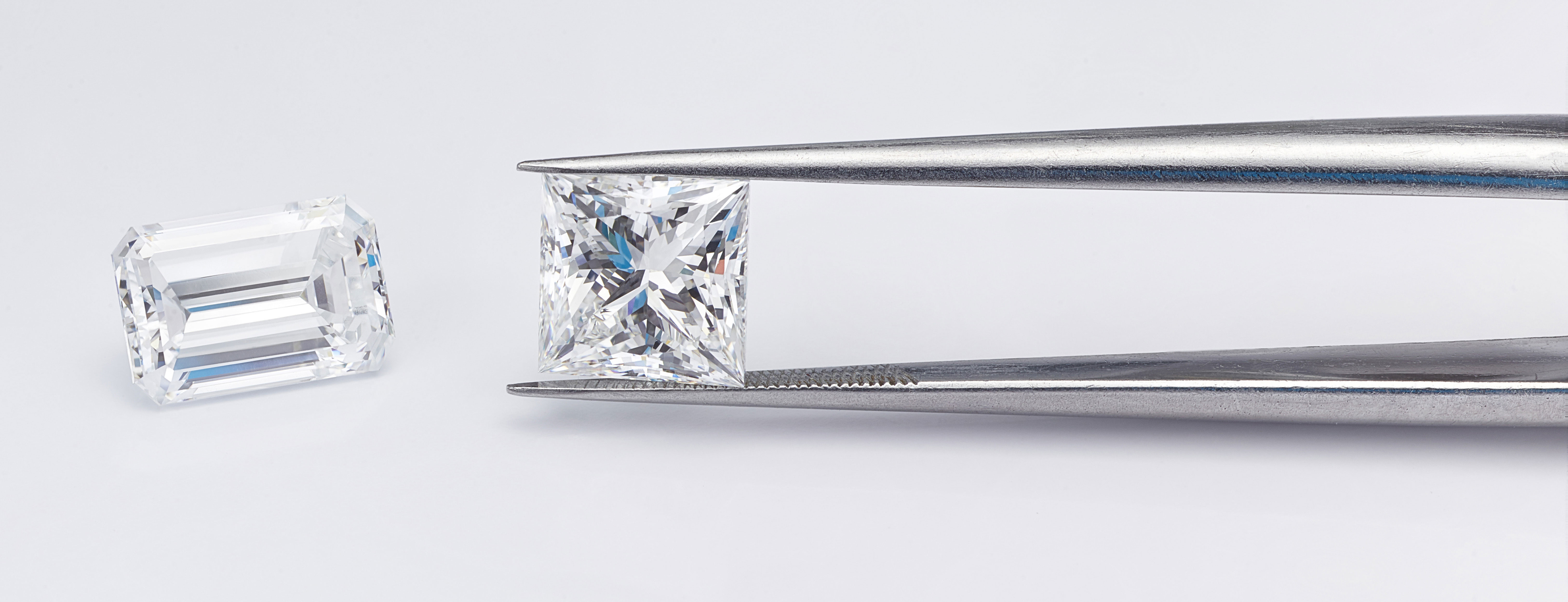
EMERALD CUT diamonds
The Diamond Report
American Gem Society Laboratory and Gemological Institute of America reports are the two major diamond reports to consider when shopping for ideal cut diamonds.
American Gem Society
Diamond reports issued by the American Gem Society (AGS) Laboratory in 1996 provide numeric cut grades, as well as colour, clarity, and weight assessments for diamonds.
As a result, AGS brand the term 'AGS Ideal Cut' to describe the ideal diamond cut over all other diamond dimensions. AGS labels a diamond this way if it meets its ideal proportions and polish parameters. An ideal diamond has a zero cut grade on the AGS scale, and AGS diamonds are marked with the report number in laser engraving on the girdle.
Seeing AGS zero cut diamonds through an Ideal scope (or a similar device) will reveal the hearts and arrows pattern. A look at the pavilion displays hearts around the pavilion when the pavilion section is viewed up; a look at the circumference displays arrows surrounding the circumference when the pavilion section is viewed up.
There is typically a significant price difference between the price of diamonds, with AGS reports indicating that they are AGS Ideals (or AGS 0s or AGS 0's) compared to diamonds with other grades.
Gemological Institute of America
Cut, colour, clarity, and carat weight are the four Cs of diamond grading determined by the Gemological Institute of America (GIA). All diamond cutters, wholesalers, buyers, and retailers understand this language.
In addition to listing the diamond's proportions and measurements, the GIA report assesses its polish, symmetry, and overall cut.
There will be a cost difference between a diamond with a GIA report showing ideal measurements and excellent cut grade versus one with an AGS report depicting zero cut grade.
Performance Evaluation
Ultimately, a diamond with a super ideal cut will only be worth its salt if it performs well. Compared to an inferior cut diamond, one with a fantastic cut will sparkle more and appear more prominent.
You don't have to pay more for an Excellent-cut diamond if you can't tell the difference between it and a super ideal cut diamond. Purchasers will generally be satisfied with a GIA "Excellent" or AGS "Ideal" cut grade. Expertise and a keen eye are needed to judge a diamond's performance beyond that.
Take a closer look at "diamond performance" and the easiest way to evaluate it.
Sparkle, Fire, And Brilliance
For a diamond to perform well, three factors must be considered: brilliance, dispersion, and scintillation. It is the white light that you see that gives off brilliance. Coloured light is called dispersion or "fire." It happens as the diamond moves, and the pattern of dark and light areas appears.
It's the diamond's cut that determines the sparkle, fire, and brilliance of the diamond. A diamond with a good cut will show more of these effects. It is still a challenge to distinguish the very top super ideal cuts from the standard "Excellent" or "Ideal" cuts.
You can learn much about a diamond's quality using imaging techniques like Hearts and Arrows, Ideal scope, and ASET. The symmetry and light return of the diamond can be determined from these measurements.
The Symmetry Of Hearts And Arrows
Despite knowing how to evaluate "Hearts and Arrows," you may not know how to use them. An arrows-and-hearts viewer will display a symmetrical pattern of arrows on the face-up view of a perfectly symmetrical diamond. In contrast, a heart viewer will display a symmetrical pattern of hearts in the face-down view.
The mere presence of hearts and arrows, however, is not enough. Most dealers still call non-perfectly symmetrical diamonds "Hearts and Arrows" when they are less than perfectly symmetrical.
Idealscope Imaging and ASET
It provides similar imaging to Idealscope and ASET. These two measurements indicate how much light is returned to the diamond and how much is leaking out.
Using the Idealscope, you can see the red, white, and black areas of the screen. Those with red areas have light returning, and those with white areas have light leaking. In a straight-on view, black areas indicate areas where light is blocked by the camera. If you are using Idealscope imaging, look for stones with a minimum amount of white.
Angular Spectrum Evaluation Tool (ASET) provides information about a light return from different angles using more colours than Idealscope. In an Idealscope, the blue areas should match the black arrows pattern, which is essential for contrast. Light returns from low angles are indicated by green, while light returns from medium angles are indicated by red. Light leakage is indicated by both white and black. Make sure that the ASET imaging shows stones that are relatively white and black.
Conclusion
Let's wrap up with some takeaways!
- It is marginally different from a GIA "Excellent" or AGS "Ideal" cut diamond in terms of quality.
- Top cuts can make diamonds appear more extensive, but the added cost may not be worth it. That money could be better spent on a diamond with higher carat weight.
- Diamonds are known and unrivalled for their fire and brilliance because of their cut.
- Among the characteristics of a diamond is its cut, which includes its shape, polishing, and symmetry.
- Ideal cut diamonds aren't just evaluated based on their cut.
Feel free to contact us!
FAQS
Ideal cut diamonds: are they worth it?
If a super ideal diamond has superior performance, it is only worth purchasing. An exceptional cut diamond will look larger and sparkle more than one with a poor cut.
What is the difference between an ideal cut and an excellent cut?
AGS 'excellent', on the other hand, is a lower cut quality than GIA 'excellent'. AGS 'ideals', on the other hand, might produce a better cut diamond than some GIA 'excellent' stones.
How much does the cheapest diamond cut cost?
Asscher and emerald cuts have the lowest carat-per-carat prices. With a step-cut diamond, there is less waste when it comes to cutting diamonds off of the rough stone, which costs the same regardless of the cutting process.
How big are ideal cut diamonds?
Compared to less-brilliant "spread" diamonds, which are intentionally cut shallower, so they appear wider, ideal cut diamonds are slightly smaller in diameter than less-brilliant "ideal" diamonds.
What is the most expensive diamond shape?
As far as diamond shapes go, round brilliant cut diamonds easily top the list. The most popular diamond shape is round, partly because it's the most common. Today, round diamonds account for more than half of all diamond sales. A diamond with this shape is highly in demand, so retailers and miners can charge more.


